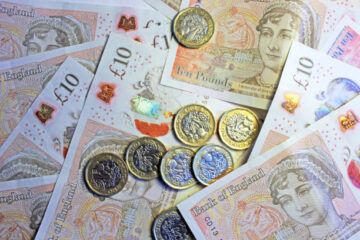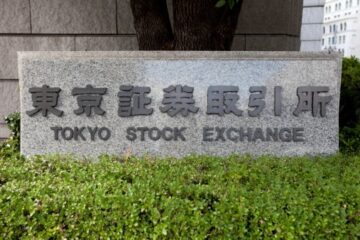The Federal Reserve is tasked with a tough job. It has to balance a dual mandate targeting low inflation and unemployment, two often competing goals that are particularly at odds in 2025.
We’ve seen increasing unemployment and layoffs, and inflation progress has stalled recently. The prospect of tariffs fueling inflation later this year leaves the Federal Reserve in an impossible situation: Cut rates and risk runaway inflation, or increase rates and risk sending the economy into recession.
Related: Goldman Sachs unveils tariffs prediction, recession forecast
Given the risks, the Federal Reserve is taking a wait-and-see approach to setting interest rates, forcing market watchers and economists to rethink their interest rate cut forecasts.
Federal Reserve Chairman Jerome Powell risks falling behind the curve in 2025.
Image source: Chip Somodevilla/Getty Images
The Fed risks falling behind the curve this year
The economy is arguably at a crossroads. Although economic activity was solid in 2024, cracks are emerging, and newly instituted tariffs could send GDP reeling later this year.
The U.S. unemployment rate has ticked up to 4.2% from 3.4% in 2023 and there’s been a steady drumbeat of layoffs recently. According to Challenger, Gray, & Christmas, 497,000 Americans got pink slips in the first quarter, largely due to technology sector layoffs and job losses associated with the Department of Government Efficiency, or DOGE, efforts. There were 105,441 cuts in April, up 63% from one year ago.
Related: Surprising jobs report resets Fed interest rate cut forecast
Those losing their jobs have fewer options than they did one year ago. The Job Openings and Labor Turnover Survey, JOLTS, shows over 900,000 fewer unfilled jobs available in March than last year.
Job losses are rising, despite inflation being stubbornly above the Fed’s 2% inflation target. In March, CPI inflation was 2.4%, unchanged from last September.
The combination of job losses and sticky inflation has led many Americans to rethink their spending, shifting dollars from discretionary purchases to essentials. Following newly instituted tariffs, that behavior is likely to continue this year.
Eager to revive U.S. manufacturing, President Donald Trump has embarked on an arguably risky tariff plan. He instituted 25% tariffs on Canada, Mexico, and autos earlier this year and announced higher-than-hoped reciprocal tariffs on April 2, so-called “Liberation Day.”
The market reaction to those tariffs has been resoundingly negative. The S&P 500 peaked in mid-February, shortly after the Mexico and Canada tariffs were announced, and despite a recent rally, it remains down 4% year-to-date.
President Trump paused most reciprocal tariffs on April 9 to allow for trade negotiations. Still, he’s left in place other tariffs, including a whopping 145% tariff on Chinese goods that has lifted tariffs on some Chinese imports to about 160%.
Those tariffs will likely increase prices on many items, sparking inflation. Meanwhile, tariff uncertainty is taking a toll on sentiment, leading households and businesses to pause or cancel spending plans.
If that behavior continues, the Fed may find its decision to hold interest rates steady on May 7 a mistake that puts it behind the curve in fending off a recession.
Analyst resets interest rate cut outlook after FOMC fails to cut rates
The Federal Reserve meets eight times yearly to decide on appropriate interest rate levels to ensure low inflation and unemployment.
Related: Veteran fund manager who predicted the S&P 500 rally updates forecast after Fed, China news
It hiked rates substantially in 2022 and 2023 to crimp runaway inflation before cutting rates three times late in 2024 to shore up the jobs market.
The shift to dovish monetary policy was widely expected, a key reason stocks rallied sharply last year. Optimism was that the Fed would continue easing interest rates in 2025; however, stalled progress on inflation and tariff uncertainty has derailed those predictions.
Absent a major downturn in economic activity that causes the unemployment rate to surge meaningfully higher, and greater clarity into how tariffs impact inflation, the Fed has shifted to the sidelines.
As a result, the CME FedWatch tool, which gauges market participants’ interest rate outlook by tracking the futures market, now predicts we won’t see an interest rate cut until at least July.
The Fed Funds Rate is currently set at 4.25% to 4.5%. The FedWatch tool places odds rates will be cut to 4% to 4.25% at the Fed’s June meeting at just 20%, down from 55% one week ago. The odds rates will be 4% to 4.25% in July have increased to 52% from 8% one month ago.
Not everyone is convinced that we will see lower rates that soon, though.
More Economic Analysis:
Fed inflation gauge sets up stagflation risks as tariff policies biteU.S. recession risk leaps as GDP shrinksLike it or not, the bond market rules all
After Chairman Powell outlined his reason for holding rates unchanged in May, Barclays analysts updated their interest rate cut outlook. Their take on what’s next for rates may disappoint many.
“Absent a decisive turn in U.S. economic data, the FOMC seems comfortable remaining on hold indefinitely,” wrote Barclays’ analysts in a research note on May 8. “We continue to believe, as
we have since December, that rates will stay unchanged through year-end.”
A Fed on hold for the entirety of 2025 isn’t what consumers and businesses want to hear, but it’s increasingly likely.
“If it were obvious that the next move is a cut, Chair Powell would have cut already. The problem is that this isn’t obvious at all,” the analysts wrote.
The reality is that there are so many unknowns, and the stakes so high, that the Fed has little incentive to rush to cut rates.
“We think it is the risk of a loss of
confidence in the FOMC’s 2% y/y inflation target, and the risk that policymakers need to hike rates (or at least stay on hold), that holds
the committee back, and in particular the risk that an ill-advised cut makes the problem worse and requires a sharp, costly reversal,” said Barclays. “The
resilient labor market, driven by business confidence that tariffs will be moderated, has made it easier for Powell to stick to his guns on
not delivering pre-emptive action.”
Related: Veteran fund manager unveils eye-popping S&P 500 forecast


